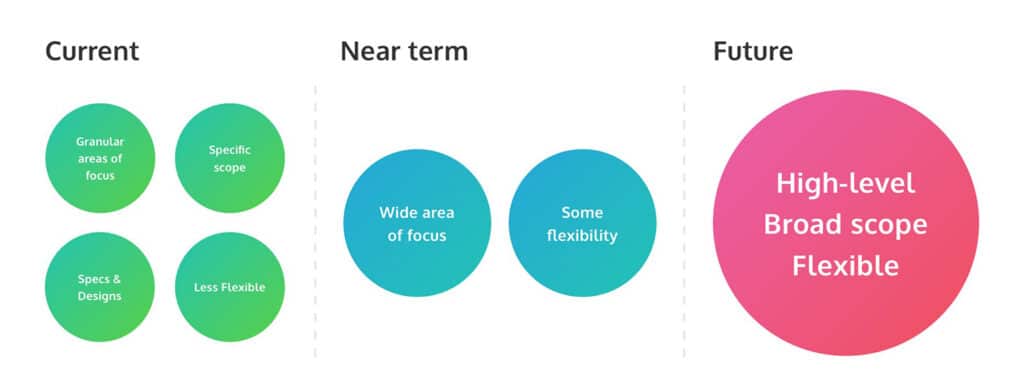Lesson 4: How to set up a release plan with your roadmap
From the e-course “How to build a roadmap everyone understands”
Today’s lesson is pretty short. So far we’ve been talking about the importance of communicating themes and ideas – but when do you finally plug them into a release plan?
The answer is: Just a few weeks ahead of the release itself.
Remember that the benefit of working with a theme-based roadmap is that you don’t have to plan features ahead of time. You don’t have to be stuck with dependencies. You don’t have to set a plan months in advance.
With this roadmap, you can let your plans beyond 6 weeks stay fuzzy. It’s what being agile is all about.
That means you should be actively planning your upcoming 2-3 releases. You should be finalizing specs, user stories and any other supporting details your devs need to jump into action with a release plan. Once you hand it over to them, they’ll be responsible for:
- budgets
- engineering/design estimates
- release dates
Even though you may not be heading up this effort, you’ll be there as a facilitator.
You may need to clarify a spec or scope out alternatives when there’s implementation issues with the original spec you pushed over. When those kinds of questions come up, it’s still up to you to make a judgment call.
If you’ve been trying to plan your releases way ahead of time – or even the entire quarter at once – you can breathe a sigh of relief. When you limit your release plans to the upcoming few weeks, you’ll find that your release dates and estimates are a lot more accurate. That’s because you’re not making educated guesses anymore. You’re making decisions based on the most current and up to date information you have.
By the way, if you’ve been wondering whether you can use a Gantt chart now, the answer is yes! Once you’ve confirmed a plan, you can use Gantt charts, along with tools like Trello, JIRA, PivotalTracker are ideal for managing your projects.
Now you have two very important pieces in place.
Your product roadmap, which helps you think about the bigger picture…

…and your release plan, which helps you think about your upcoming sprints.

Course lessons are sent via email, but if you can’t wait, you can continue now: